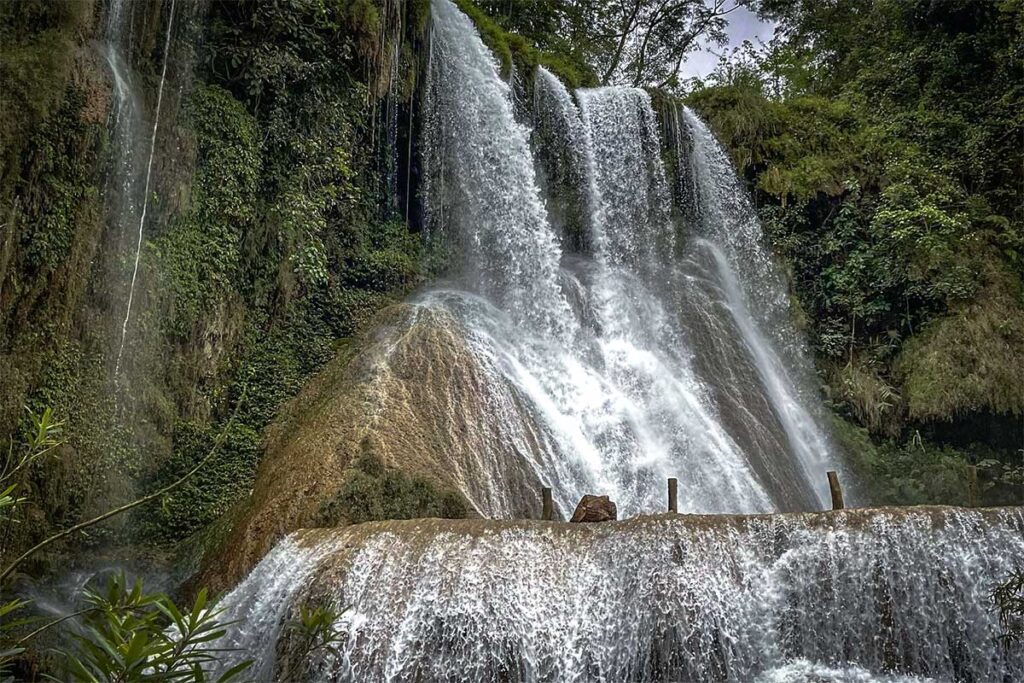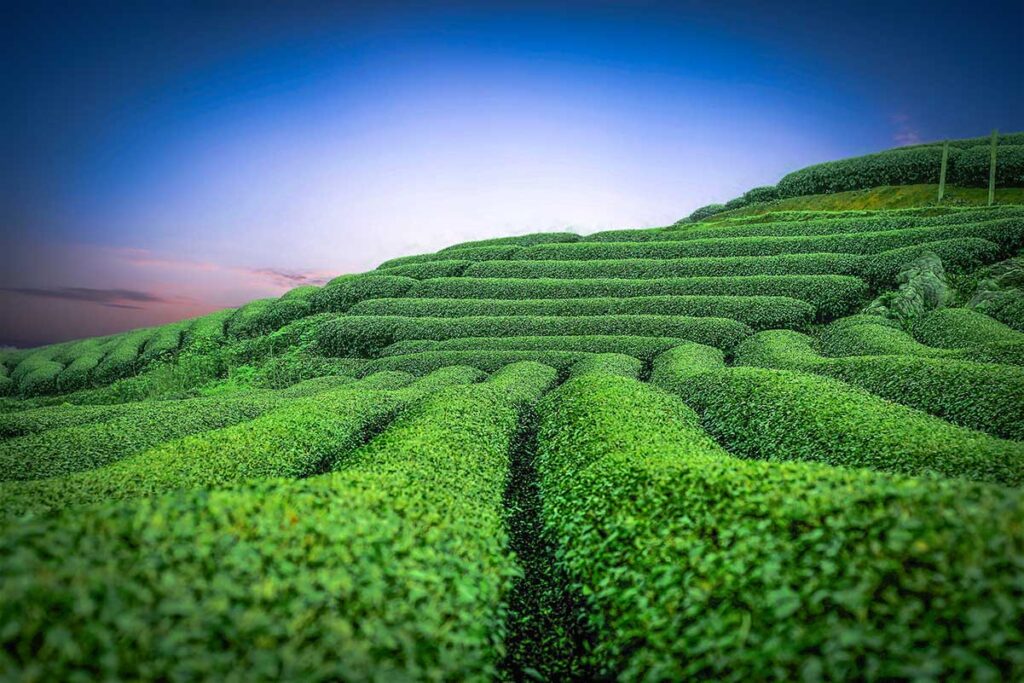What is Dai Yem Waterfall Like?
The waterfall itself
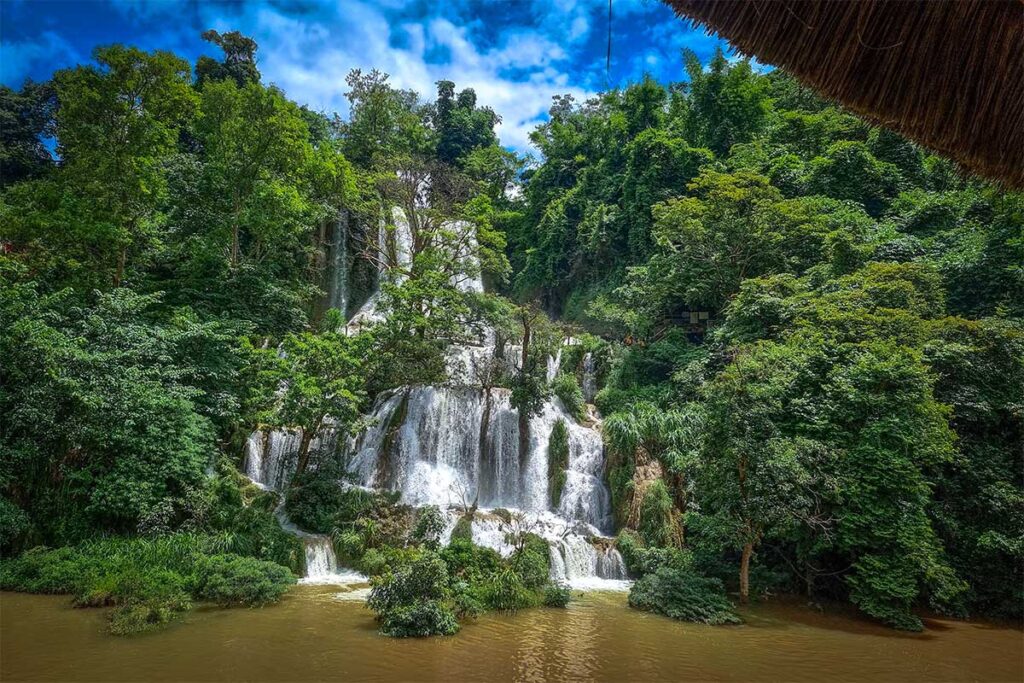
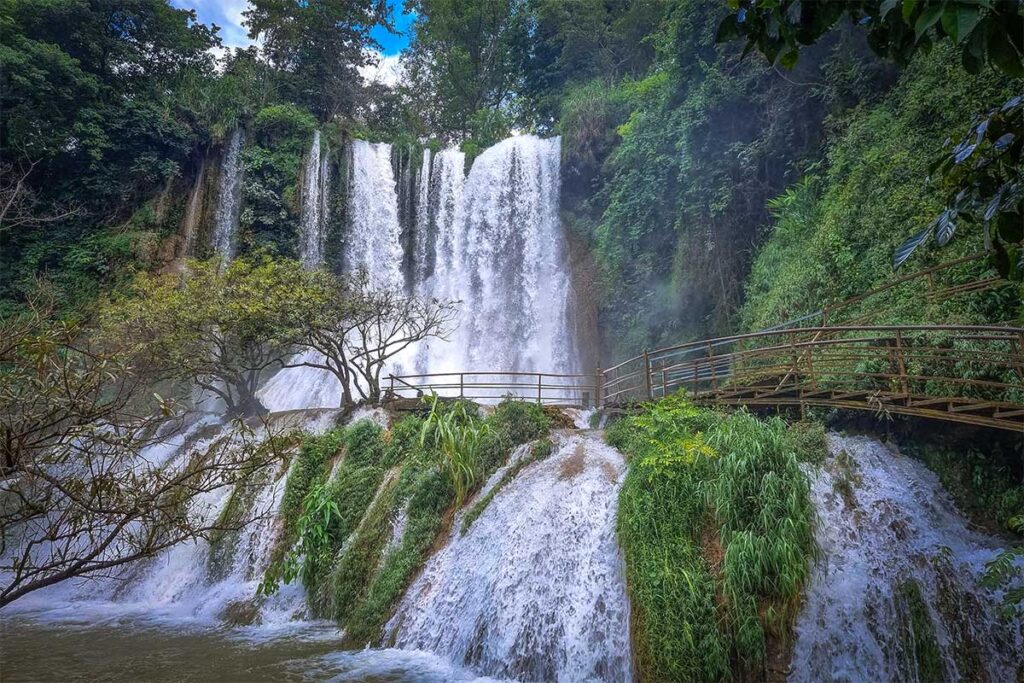
Dai Yem Waterfall has two levels, with a total drop of around 100 meters. The main section is wide — up to 70 meters — and especially impressive during the rainy season when the water flow is strong. It’s sometimes described as a “nine-tier waterfall” because of the way the water spreads across different layers. The best time to see it at full strength is from April to October, when the stream feeds the falls continuously.
The area around the waterfall
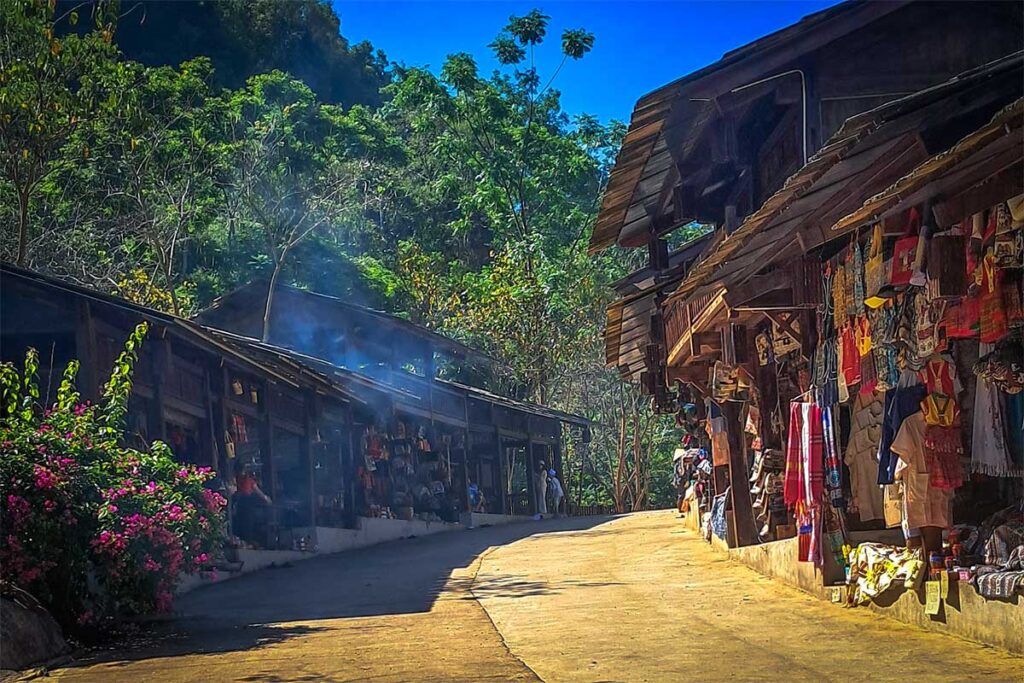
The area around the falls has been developed as a tourist zone, with landscaped walking paths, flower gardens, and small wooden bridges. It’s clean and easy to walk, but also feels quite artificial. You’ll find cafés, souvenir stalls, and check-in photo spots — more theme park than untouched nature. For some travelers, it’s a fun stop. For others, it can feel a bit overdone.
The Love Glass Bridge
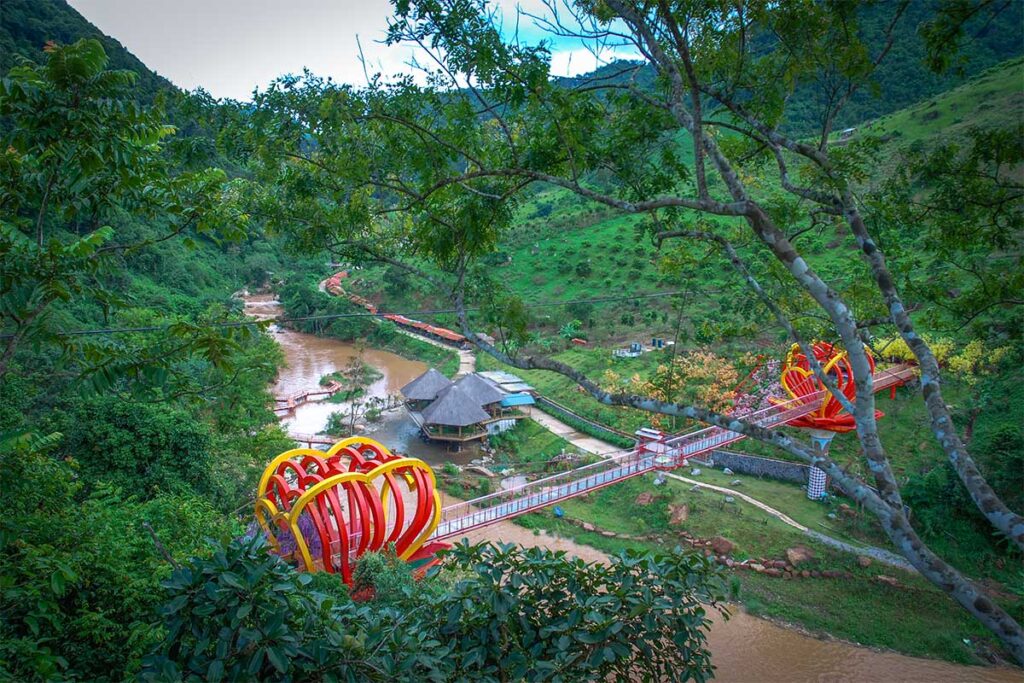
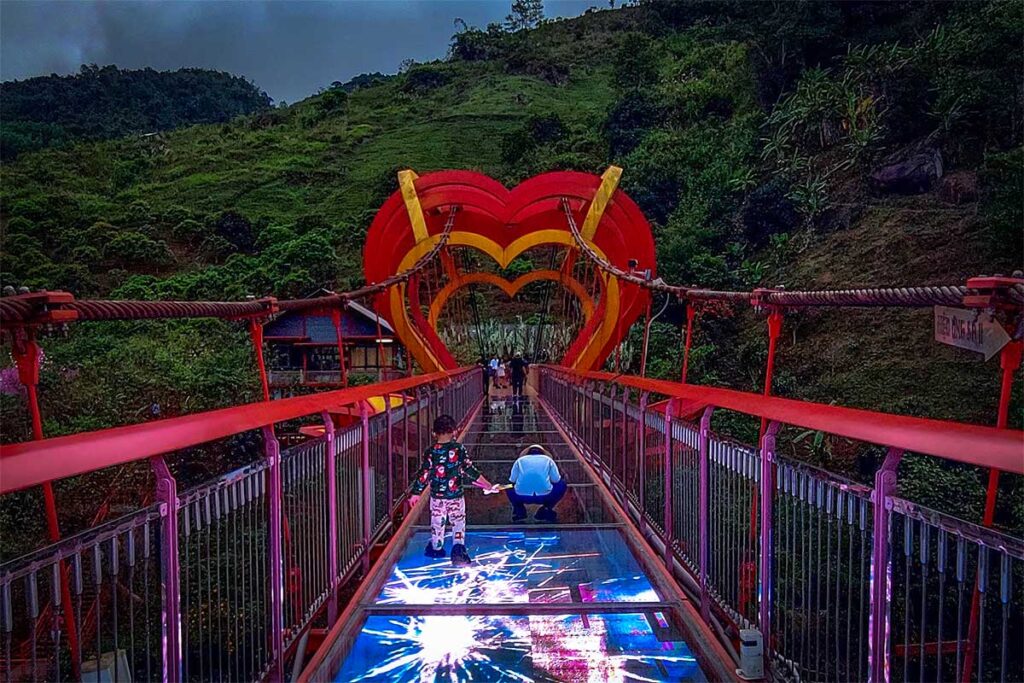
Across from the waterfall is the “Love Glass Bridge,” a smaller 5D-effect glass walkway with special sound and visual effects. It’s about 22 meters above the stream and features a large heart at the center. This isn’t the famous Bach Long Glass Bridge (which is much larger and nearby), but a separate attraction. You’ll need to pay an extra fee to access it. Some travelers enjoy the experience, but many consider it overpriced and not really worth the add-on.
Entrance Fees & Opening Times
Opening hours
Dai Yem Waterfall is open daily from 7:00 AM to 7:00 PM. Even though it’s a natural site, the entire area is fenced off and ticketed — so you can’t access it early in the morning or after closing hours. Plan your visit accordingly, especially if you’re combining it with other sights nearby.
Ticket prices
Here are the current prices as of the latest update:
- Entrance to the waterfall: 100,000 VND per adult
- Love Glass Bridge (optional): 100,000 VND
- Water activities (kayaking, paddling): 50,000 VND for 30 minutes
- Children under 1 meter: Free
- Motorbike parking: 10,000 VND
Keep in mind that these attractions are all separate. You’ll pay more if you want to try everything — and many visitors skip the extras.
Best time to visit Dai Yem Waterfall
Dai Yem Waterfall is open year-round, but the experience depends a lot on the season. Like most waterfalls in Vietnam, it’s most impressive when there’s plenty of rain — but that also comes with some trade-offs.
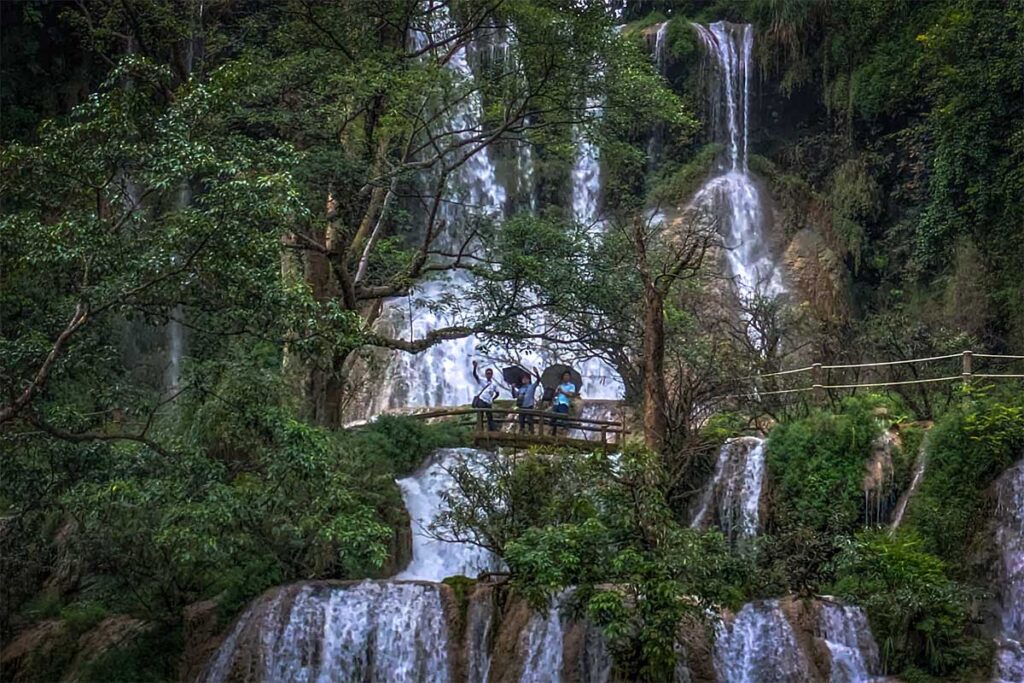
Rainy Season (April to October)
This is when the waterfall looks its best, with a strong and wide flow that makes for great photos. After heavy rain, though, the water can turn brown and murky for a day or two. Paths can also be muddy and slippery, so wear proper shoes and take care — especially if you’re traveling with kids or older adults.
Dry Season (November to March)
In the dry months, the water levels drop — and by late winter or early spring, there may only be a small stream. The upside is that the weather is more stable, the air is cooler, and the walking paths are easier to manage. But if your goal is to see a dramatic waterfall, this may not be the best time.
Is Dai Yem Waterfall worth visiting?
The waterfall itself is beautiful — especially on a hot day when you can feel the cool mist at the base. It has a wide, layered flow and looks its best during the rainy season.
That said, the surroundings are very commercial. The landscaped paths, themed gardens, and paid attractions like the glass bridge give it more of a tourist park vibe than a natural escape. If you’re traveling on a tight budget or prefer quiet, untouched nature, this may not be the right stop.
But if you’re already visiting the Bach Long Glass Bridge nearby, it’s easy to combine the two. For families, couples looking for photo spots, or anyone curious about Vietnamese-style tourism zones, it can be a fun and easy detour.
For hardcore nature lovers or those seeking something authentic and peaceful — there are better waterfalls in the region.
How to get there
Location
Dai Yem Waterfall is located in Muong Sang Commune, about 5–10 kilometers from the center of Moc Chau town. If you’re staying in the countryside or outside the main area, it could be a bit further. Either way, it’s an easy destination to reach.
By motorbike or scooter
A motorbike is one of the most flexible ways to get there. It’s a short 10–15 minute ride from town, and the roads are mostly in good condition with a few mild hills. Expect to pay around 150,000–200,000 VND per day for rental. This option is best if you’re confident riding on your own.
By taxi (Metered)
A metered taxi from town will cost between 100,000 and 200,000 VND, depending on distance and waiting time. Since there are no taxis waiting at the waterfall, it’s smart to ask the driver to wait or book a round trip in advance. It’s a convenient option, especially if you also want to stop at Bach Long Glass Bridge, which is nearby.
Private car with driver (Fixed price)
If you’re planning to explore more of Moc Chau in one day, a private car is the most comfortable choice. You can build a full itinerary that includes:
- Dai Yem Waterfall
- Bach Long Glass Bridge
- Tea plantations and heart-shaped tea hills
- Other waterfalls or flower gardens
Book a car with driver to Dai Yem
A private car makes it easy to visit Dai Yem Waterfall — and lets you add nearby sights like Na Ka Valley or the Glass Bridge to your route.
